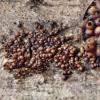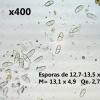
07-06-2016 08:37
 Bernard CLESSE
Bernard CLESSE
Bonjour à tous,Je sais qu'on sort des Ascos ici m

07-06-2016 21:38
 Bernard CLESSE
Bernard CLESSE
Bonsoir à tous,Voici ce que pense être un Mollis

07-06-2016 12:59
Thorben HülsewigHi there,for 2 days i found Lasiosphaeria ovina o

07-06-2016 01:19
 Rubén Martínez-Gil
Rubén Martínez-Gil
Hola a todos. Subo unas fotos de unos apotecios q

22-05-2016 23:18
 Bernard CLESSE
Bernard CLESSE
Bonsoir à tous,Pourriez-vous me donner votre avis

07-06-2016 09:42
En madera sin determinar No tengo claro si lo que

06-06-2016 12:17
 Man Myco
Man Myco
Hello,I am looking for bibliographic reference con
Nectria??
Castillo Joseba,
06-06-2016 09:54
En madera sin identificar
No le veo reacción al KOH
Alguna suferencia
Joseba
Castillo Joseba,
08-06-2016 09:26
Re : Nectria??
No hay ninguna sugerencia????
Christian Lechat,
08-06-2016 09:42

Re : Nectria??
Hi Joseba,
your fungus could be Thelonectria but it is dead and unexploitable.
Christian
your fungus could be Thelonectria but it is dead and unexploitable.
Christian
Castillo Joseba,
08-06-2016 10:00
Re : Nectria??
Gracias Christian... fin del trabajo
Joseba
Joseba



